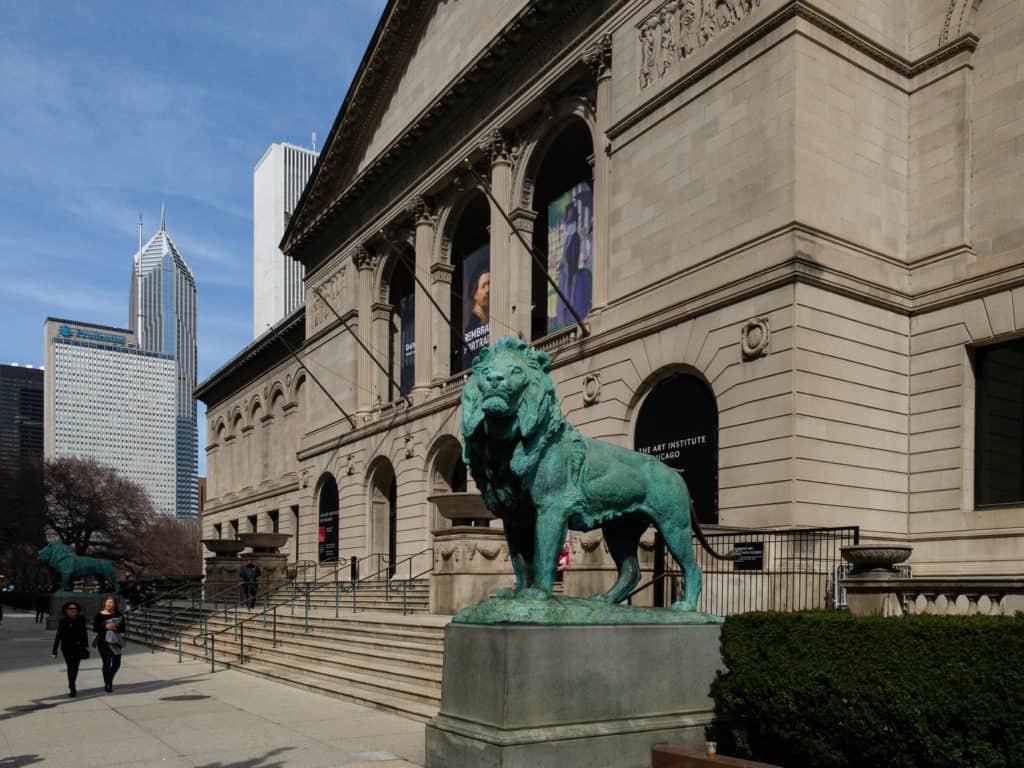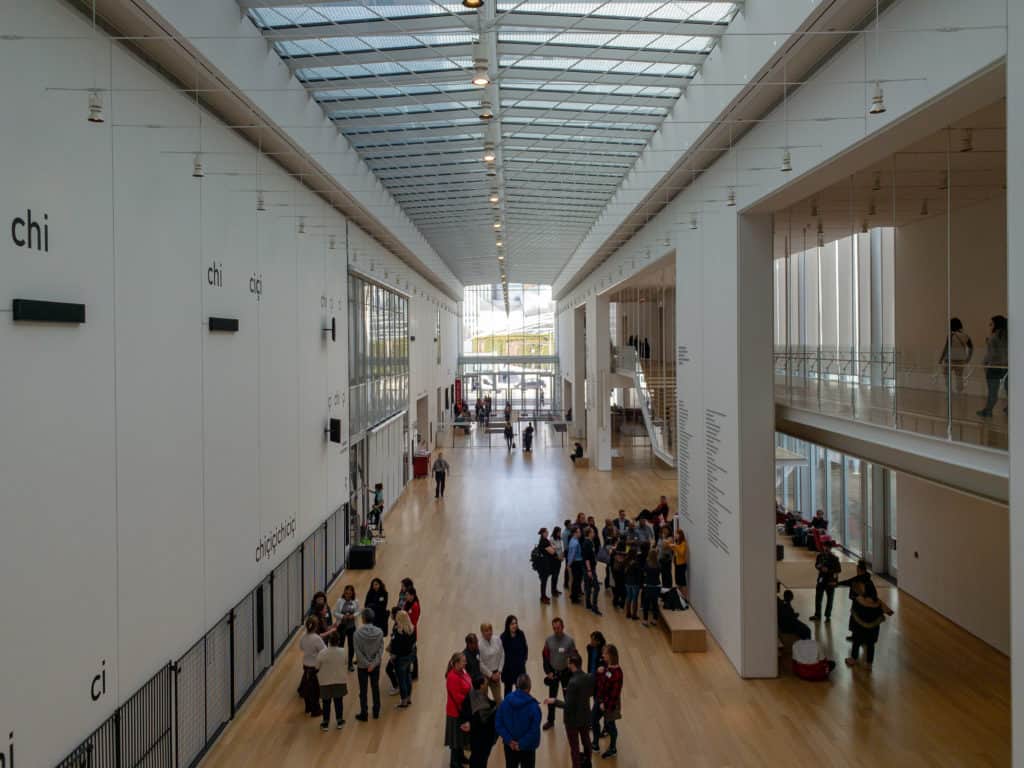The Art Institute of Chicago is home to one of the largest and most significant collections of art found anywhere in the world. Located at the edge of Grant Park, right in the heart of Chicago’s bustling downtown, the Art Institute of Chicago routinely hosts approximately 1.5 million visitors each year. Its tremendous assortment of artwork includes pieces that span over 5,000 years of human existence, and is divided into 15 curatorial departments that include such diverse mediums as painting, sculpture, drawings, prints, photography, textiles, architecture, and more—all drawn from every region of the world.
Art Institute History and Background Information
The Art Institute of Chicago was founded in 1879, and moved into its current prominent location on Michigan Avenue in 1893. This iconic building was designed by the Shepley, Rutan, and Coolidge firm based in Boston, and done in the classical Beaux-Arts style. To this day it remains the museum’s primary entrance, its grand steps flanked by the legendary lion sculptures that have welcomed visitors to the Art Institute for over 125 years now.
As its collection has grown and evolved over the years, the Art Institute of Chicago has expanded and renovated many times. Today it encompasses multiple buildings, including the Art Institute’s newest structure, the Modern Wing. Designed by the esteemed architect Renzo Piano, the Modern Wing was the biggest expansion in the history of the museum. Completed in 2009, this lovely new addition to the Art Institute added a whopping 264,000 square feet of space to the facility. Facing north toward Millennium Park, it provides the venerable institution with a second entrance—and a gleaming, contemporary one at that.
What’s at the The Art Institute of Chicago
The Art Institute of Chicago houses approximately 300,000 different pieces of artwork within its famous walls. While the Art Institute is perhaps best known for its remarkable collections of Impressionist art and post-World War II pop art, the museum has significant holdings in a vast array of styles, eras, and genres. These artistic treasures include sculptures and relics from the ancient Greeks, Romans, and Egyptians; models, drawings, and prints from a host of acclaimed architects and urban designers; stunning bronze, jade, and ceramic pieces from throughout the past 5,000 years of Asian history; and a great deal more.
Specific, individual highlights of the Art Institute’s remarkable collection include such classic works as Edward Hopper’s Nighthawks, Vincent van Gogh’s The Bedroom, Grant Wood’s American Gothic, Gustave Caillebotte’s Paris Street; Rainy Day, Henri Matisse’s Bathers by a River, Pablo Picasso’s The Old Guitarist, Claude Monet’s Stacks of Wheat, Georgia O’Keeffe’s Sky above Clouds IV, and so much more.
The Art Institute also features a number of amenities. Guests to the Art Institute have three different on-site dining options. These choices include Terzo Piano, a fine-dining restaurant specializing in organic ingredients and Mediterranean flavors; the Museum Café, a family-friendly spot serving a wide range of lunch plates alongside a healthy kids menu; and the Balcony Café, where you can grab multiple kinds of coffees, snacks, and quick bites. The Art Institute is also home to two different gift shops, one located conveniently by the museum’s main entrance on Michigan Avenue, and another located right inside the entrance to the Modern Wing, on Monroe Street.
Tips for Visiting The Art Institute
- A great way to save money and time is to buy a Tourist Pass. Go Chicago Card, a Chicago CityPASS or a Chicago Explorer Pass Which all give you Fast Pass admission. In addition, Explorer Passes and Go Cards give you 10% off at the museum store.
- If you’re traveling as part of a group or family with small children, you’re in luck: Children under the age of 14 are always permitted to enter the Art Institute of Chicago free of charge.
- The Art Institute is open 7 days a week, between the hours of 10:30am and 5:00pm. However, each Thursday evening the Art Institute remains open until 8:00pm. Thus, if you want extra time here—or simply desire that extra bit of flexibility with your schedule—keep Thursday in mind when planning your visit.
- The Art Institute regularly runs a whole host of special programs ranging from gallery talks to guided tours to informative lectures to live performances. Some of these programs require advance reservations; others, you can just show up and go along for the ride. If you’re interested in this sort of programming, make certain to check their website in advance of your visit for more details.
- With all the wonderful works on display around you, it’s likely you’re going to want to have that camera ready. In most cases, non-flash photography is allowed throughout the museum. However, in the case of the occasional special exhibit or certain pieces on-loan from other collections, photography might be forbidden. Just make a point of paying attention to posted signage as you move throughout the Art Institute in order to stay on the right side of the rules.
- Valet parking is available on-site at the Art Institute, and there are a number of parking garages to be found in the immediate vicinity of the museum. However, these options can get pretty pricy in a hurry. Fortunately, the Art Institute is easily accessible via a variety of public transportation methods, including bus, train, commuter train, and bike share services. If you have the time or inclination, any of these options would save you a great deal of money.











